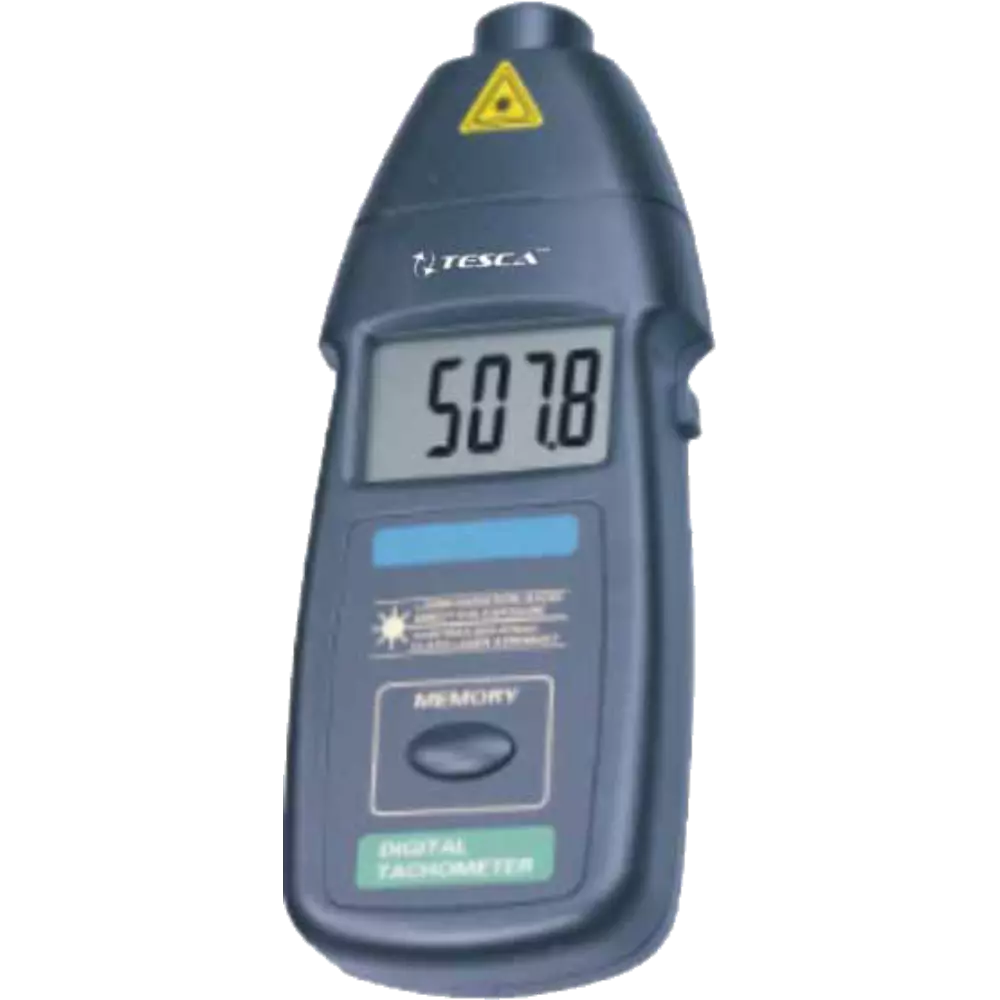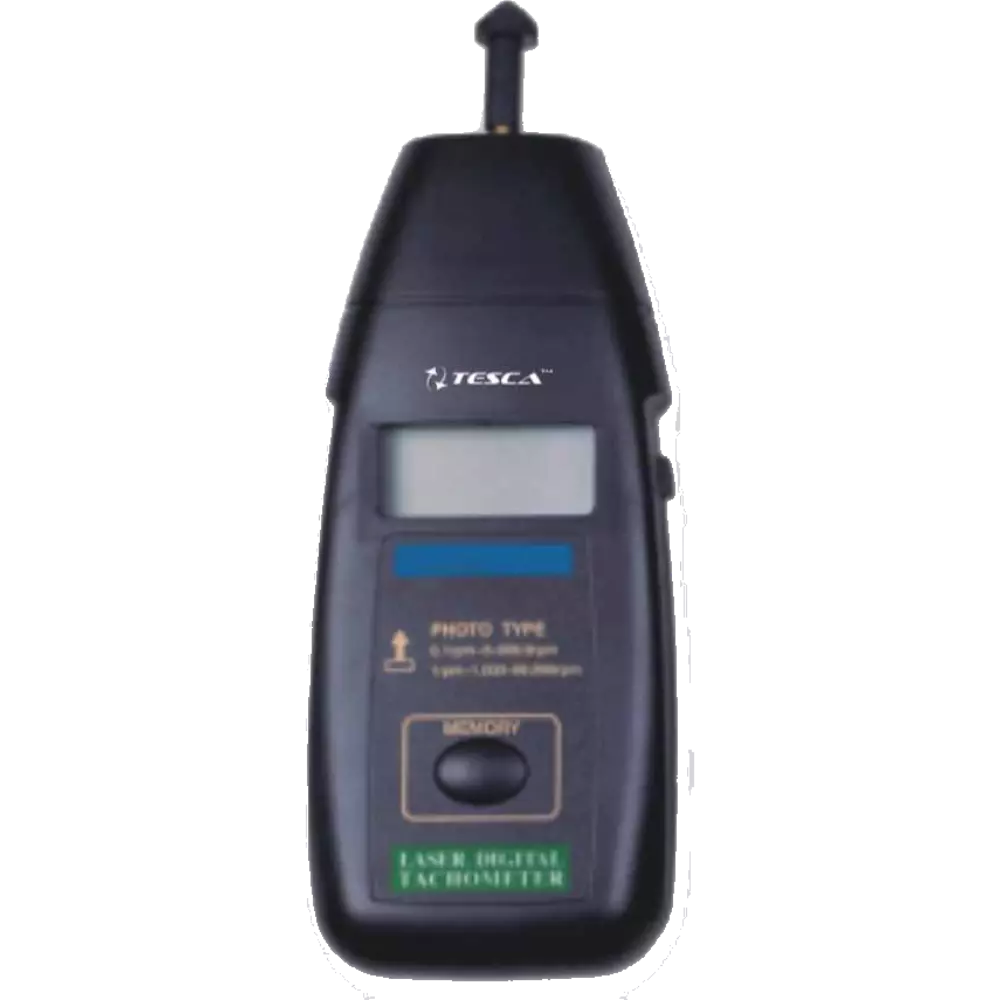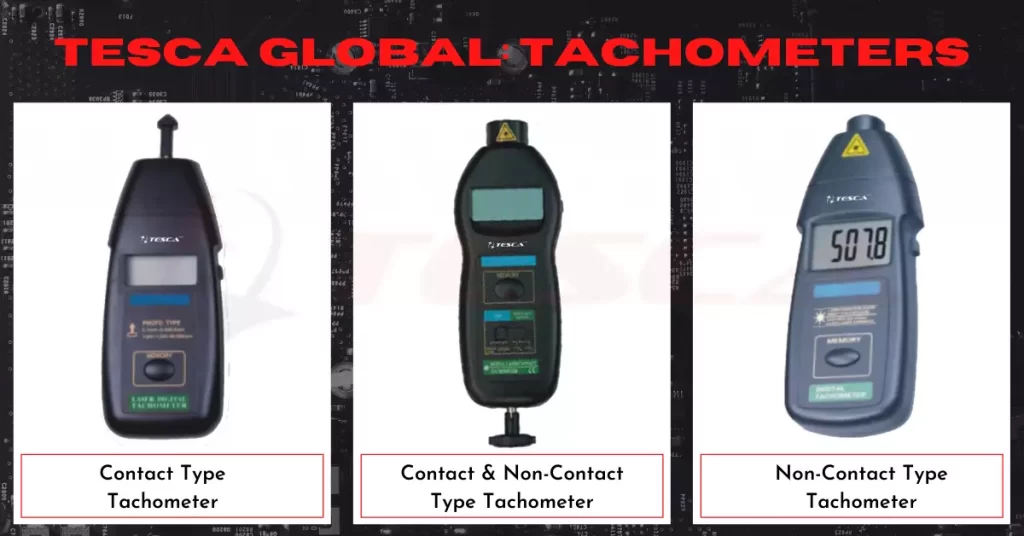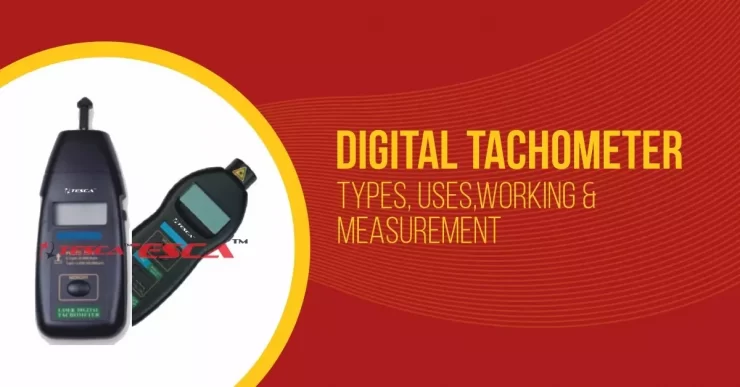Table of Contents
One instrument that has increased its demand in the market due to its reliability is the Tachometer. Let us find out more about this device here with the help of this article.
What is a Tachometer?
A Tachometer is a device that is useful in measuring the operating speed of an engine at the revolution of RPM and is helpful for planes, both cars, and other types of vehicles.
These device Gauges come in analog and digital forms. It indicates the engine speed, which plays a vital role in determining the engine’s power output. It helps measure the rotation speed of a shaft or disk, frequently that of a machine.
It is usually measured in rotations per minute (RPM) and sometimes in revolutions per second (RPS).
We can use Tachometers to view the RPMs on cars, boats, motorcycles, and other machines with engines. There are several types of Tachometers, including mechanical, electronic, and magnetic.
A digital meter helps measure and indicate the speed of a rotating object. It is an optical encoder that helps determine the velocity of the motor for the rotating shaft and is helpful in automobiles, medical instruments applications, and more.
It is also popularly known as the Revolution Counter.
The word Tachometer originates from the Greek words tachos and Metron, which means “speed” and “to measure,” respectively. The device works on the principle of a Tachometer generator, and it also works on the operating principle from electronic, optical-based, and electromagnetic.
Uses for Digital Tachometers:
So what does a Tachometer measure? Let’s find out it here:
With the help of a Tachometer, the Gauge can determine how hard the vehicle’s engine is working. It helps in determining the engine’s overall condition, whether automatic or manual transmission or Marine gear.
A Tachometer mainly determines the operating speed of the motor. With this, you can know that if a machine works too fast or too slow, it can Tachometer Age its power source.
A tachometer helps determine the engine’s operating range in the Marine application to ensure that you do not exit from the maximum engine speed. It is also helpful in assessing the performance of the engine and also about the fuel consumption. It is a device that is useful in Industrial and farm machinery.
1. Tachometer in Cars:
A car Tachometer is an instrument that measures engine speed in revolutions per minute (RPM). It is also popularly known as the rev counter. The primary purpose of the Tachometer is to allow the driver information about how much power he can use at a particular moment. It is helpful in automobiles, trucks, airplanes, motorcycles, generators, and any other machinery where rotation measurement of shafts is necessary.
2. Marine Tachometer:
The marine Tachometer measures the number of revolutions per minute or RPMs that a boat engine makes. It’s a vital instrument in any boat’s cockpit because it directly relates to how much fuel a particular engine burns and its maximum speed.
The tool is present in the engine room, and it sends information regarding the vessel’s speed to the bridge. It consists of a dial or digital display showing the speed and engine rpm.
3. Cool Tachometers
A cool Tachometer is a speedometer that helps you measure the speed of your vehicle. It can help you monitor your rate when you are in motion and thus help you regulate the speed of your car to avoid going beyond a specified limit.
Cool Tachometers are available on automobiles, motorcycles, lawnmowers, and other machinery that require regular maintenance.
It usually uses an angled disk with a series of slots attached to a pointer on a dial.
Let us know about the working process of a cool Tachometer here: When the needle of a Tachometer (located behind the steering wheel) points to “6” or “60”, it means that the car is ready to move at 60km/h. The Tachometer works by measuring the rotation speed of the engine’s crankshaft. The faster you want your car to go, the more revolutions per minute (rpm) you need.
Types of Tachometers:
There are different types of Tachometers as per the working principle and device’s measuring technique.
Based on working principle:
A Tachometer may be electronic or mechanical. It works based on the working principle of the Tachometer. Before we throw light on the types of Tachometer, let us know about the working principle of Tachometer.
A Tachometer works on the principle of relative motion. The device operates between the shaft of the device and the magnetic field. It works as a generator and produces the voltage as per the velocity of the stick. The device counts the number of rotations that the shaft makes per minute.
For any person, it is crucial to know about the engine’s operating range and RPM to know about the machine’s working condition.
Tachometers work on any available current: alternating or direct current.
Read more: Alternating Current and Direct Current.
Let us know briefly about the type of Tachometers here:
1. Electronic Tachometer:
An Electronic Tachometer Is a valuable component that helps measure the engine’s speed in RPM. It is a device that is available in the car’s dashboard to measure the driving speed.
This device uses a magnetic pickup that you can find here the rotating engine. It generates electric pulses. The pulses that this device causes has a frequency proportional to the engine speed.
How does an Electronic Tachometer Work?
The device features numerical readings and data storage capabilities. In this device, the ignition system of the machine triggers the voltage pulse production. It begins the output of the mechanical part whenever any spark plug fires. The electromechanical part, after the triggering, responds to the average voltage to the series of pulses. It displays the average pulse voltage that is proportional to the engine speed. Lastly, the signal transmits to the screen showing the output.
2. Mechanical Tachometer or Analog Tachometer :
Mechanical Tachometer counts the RPM based on the period. It uses a series of reeds that helps in identifying the engine speed. It is a device that has all centrifugal force. It has a power on the rotating mass that helps in stretching and compressing the mechanical spring. Mechanical Tachometers display the speed of the engine and indicate the vibration frequency of the machine.
How does a Mechanical Tachometer or Analog Tachometer Work?
Mechanical Tachometers work on the utilization process of the centrifugal force. It is based on the dependency of this power on a rotating mass on the rotating speed. This device sets consecutively tuned reeds for the identification of the speed of the engine. The device has a force that can compress the stress of the mechanical springs and determines the vibration frequency of the machine.
Based on the Device’s Measurement Technique:
There are two types of Tachometer based on the device’s measurement technique:
1. Non-Contact Tachometers:

The non-contact type of Tachometer is also known as the Photo Tachometer. This type of Tachometers don’t require any physical contact with the shaft that is rotating. It uses infrared light, laser, and other resources to find accurate measurements. Non-contact type of Tachometer sends a beam of light that reflects each time on a tape and makes a full rotation. The receiver counts the reflection during the whole process and measures the rotational speed in RPM. It is a type of Tachometer that is compact, accurate, and efficient.
2. Contact Tachometers:

The contact type of the Tachometer comes built-in or fixed with the electric motor and works by bringing the freely spinning wheel in contact with the shaft or disc that is rotating.
Contact Tachometers generate the pulses with the help of the shaft that drives the wheel and then Tachometer reads the pulses that the shaft generates and measures them in the RPM.
Depending on the model, it also uses an optical encoder or a magnetic sensor which provides an accurate reading with the help of direct contact with the shaft on the rotating component.
It is also helpful in determining and calculating the distance and linear speed.
How to use a Tachometer:
Now that you know enough about the Tachometer let us know how you can use a Tachometer.
It is a device that is straightforward when it comes to using it. It works by converting the mechanical energy into electrical energy, and this electrical signal then transforms into an audible alert, vibration, or visual movement for display purposes. Operation in the device is easy when it comes to using a non-contact electronic Tachometer as it does the whole job only by pointing at the instrument at the engine. It displays the RPM and results of the user once it turns towards the pointing object.
Using the Tachometer is quite simple and can help you better understand when it’s time for an engine tune-up.
How Does a Tachometer Work?
When we talk about the mechanism of a Tachometer, then mechanical and electronic Tachometers operate differently. In terms of driving, a mechanical Tachometer is similar to the operation of a mechanical speedometer.
The rotating shaft connects with the engine’s part of the transmission to the moving Gauge in this device. It connects with the help of a flexible cable. The rotating shaft in the machine controls the position of the needle that indicates the speed of the engine.
An electronic Tachometer, on the other hand, uses a magnetic pickup to produce electrical pulses. The magnetic pickup that the device contains has a position near the rotating engine part.
It stimulates the electrical pulses at a frequency that is proportional to the speed of the engine. The circuitry in the meter helps in converting the pulse frequency that displays the frequency of engine RPM with the help of a digital readout.
Definition of Tachometer Gauge:
A Tachometer gauge, also known as a rev counter or RPM gauge, is an instrument for measuring the rotation speed of a shaft or disk, such as the crankshaft in an internal combustion engine or other machines such as turbines.
It is an instrument fitted to a motor vehicle that measures the engine’s number of revolutions per minute (RPM). The Gauge works or drives on by a shaft that connects to a generator device, which further drives with the help of the engine’s flywheel.
As the RPMs of the engine change, so does the frequency of electrical pulses from this generator. Due to changes in the pulses, the reading on the Gauge also changes. The device works by bringing the spinning wheel in contact with the disc or rotating shaft that helps in generating the pulses. We can find it on almost all internal combustion engines.
Is a Tachometer Necessary?
Yes, a Tachometer is indeed a necessary device. It is helpful in both manuals as well as automatic transmission. It is a device that is the most crucial part as it can help avoid any unnecessary wear and tear of the engine.
It also protects the issues of the engine speed before any severe Tachometer Age. It helps maintain the optimal engine speed.
Buying Guide: What to Consider When Choosing a Digital Tachometer?
If you are looking for a Tachometer and are unsure what you should look for before buying a Tachometer, here are some points that can help you find out the best one for you.
1. Preferred Type of Tachometer:
The first thing you should keep in mind is what type of Tachometer will work for you. As we already know that there are two types of primary Tachometer. They are contact Tachometer and non-contact Tachometer.
Usually, professionals prefer buying a non-contact Tachometer as it is more convenient, accurate, and versatile.
Apart from that, there are different types of Digital Tachometer that offer both contact and non-contact measuring.
You can also go for less common variations that are available in the market today. If you are looking for a device that helps measure the high-speed frequency of pulses, you can go for a frequency measurement digital Tachometer. Similarly, if you are looking for a device that helps measure the low speed, you can use a time measurement digital Tachometer.
2. Readings/Measuring Capacity of a Tachometer:
Before you buy any Tachometer, you should find out the RPMs it can measure. Also, check the minimum measurement level of the Tachometer to find out the minimum readings it won’t display.
3. Data Transfer and Storage Capacity of a Tachometer:
When we talk about storage readings, almost every type of Tachometer has a feature in it, and also, you can find out about the previous reading with just one button. If the device has a USB output or a removable SD card, you can conveniently transfer the data and analyze it.
4. Other Measurements that can be measured by a Tachometer:
Apart from the readings, other measurements such as the linear speed and length are essential. So go for a Tachometer that offers these functions too.
5. Power Supply: Battery Operated vs Plug-in Operated Tachometers?
When it comes to portability then, digital Tachometers are indeed the best known as they offer replaceable batteries rather than providing plug-in systems.
You should check the batteries that the device has to find out whether you can get the battery quickly if you are looking for a Tachometer to use for prolonged periods and go for a device that offers a continuous power supply option.
6. Type of a Tachometer’s Display :
Getting a digital Tachometer with a backlit display is the best decision for you as it displays the reading. The last several devices also offer adjusted screen brightness to make it easier for you to conserve power.
7. Other Tachometer’s Accessories:
Several manufacturers provide different types of accessories along with the Tachometer. Some of the accessories are:
Reflective tape
A carry storage bag
An Adaptor head.
Digital Tachometer: Tesca Global’s Tachometers
Have you not found the best Tachometer for your workspace?
If not then, TescaTechnologies Pvt. Ltd. is here for your rescue. We are one of the best manufacturers of Tachometers having sales in more than 85+ Countries Worldwide.

Some of the best Tachometer that we offer are:
- Digital Tachometer Contact Type
- Digital Tachometer Contact + Non Contact Type
The Tachometers that we manufacture are the best in terms of precision and offer various features. We strive to meet international quality control standards.
Tachometers are robust and have high specification materials and components that ensure their accuracy and durability.
Tesca Technologies Pvt. Ltd. is committed to providing the best Tachometer products and services available in today’s highly competitive marketplace. We provide the best Tachometers in the world to help our customers improve their processes and maximize their revenues through improved quality and efficiency. So, stop scrolling the internet as we are here with the perfect solution for you.
Conclusion:
In the end, it is right to say that Tachometers are one of the most valuable elements in industrial motor control. With the help of this device, you can ensure the safety of pigment and other automobiles.
The device measures the operating speed of an engine and also maintains the safe speed range. It is indeed the savior of your vehicle’s speed engine. Before you buy a Tachometer, make sure to know more about the features the tool offers so that you can select the right one for you.





Add comment